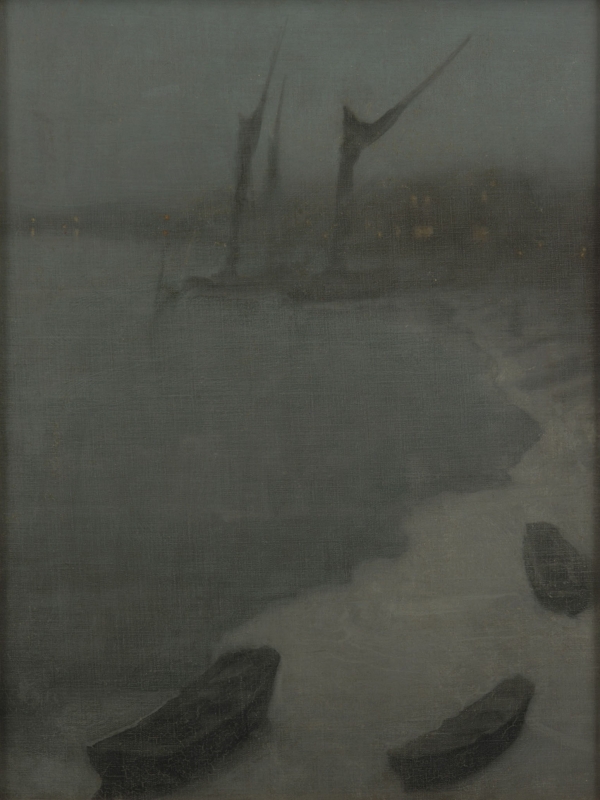Nocturne: Grey and Silver – Chelsea Embankment, Winter dates from 1879. 1
It may have been painted about 11 January 1879 when the London Times stated that 'the floating ice on the Thames has increased, so that between the bridges the river appears as if it had been frozen over'.
This was soon after Whistler had been declared bankrupt. Despite bankruptcy he was able to continue painting, and wrote on 19 January 1879 to his solicitor James Anderson Rose (1819-1890):
'I have finished one picture and sent it off yesterday evening - It goes to Scotland and the dealer assures me he can place it at once - so that I hope to be able to hand you over the 40 pounds ... very soon.' 2
It was exhibited in Glasgow, according to the art critic 'Megilp', who wrote that it was 'fresh from the easel of this artist ... a nocturne – the Thames by moonlight, with ice coming down the river, an effect seen by Mr. Whistler only the other night.' 3
Last updated: 21st April 2021 by Margaret






